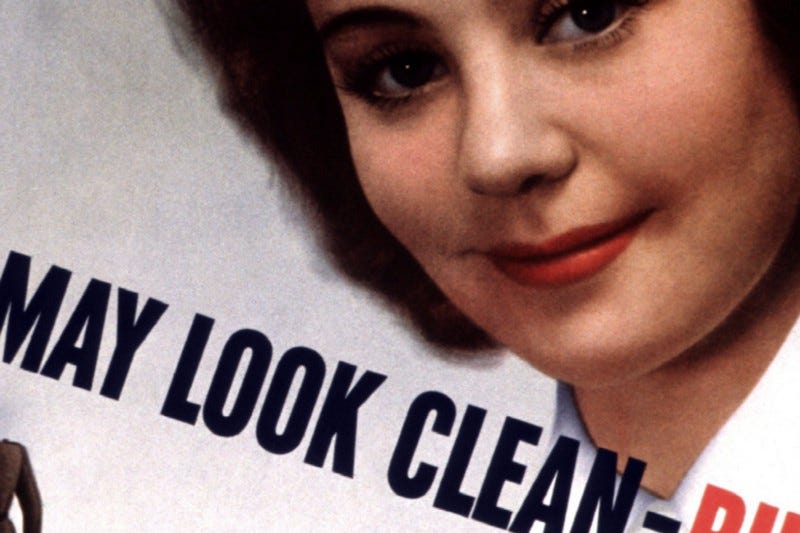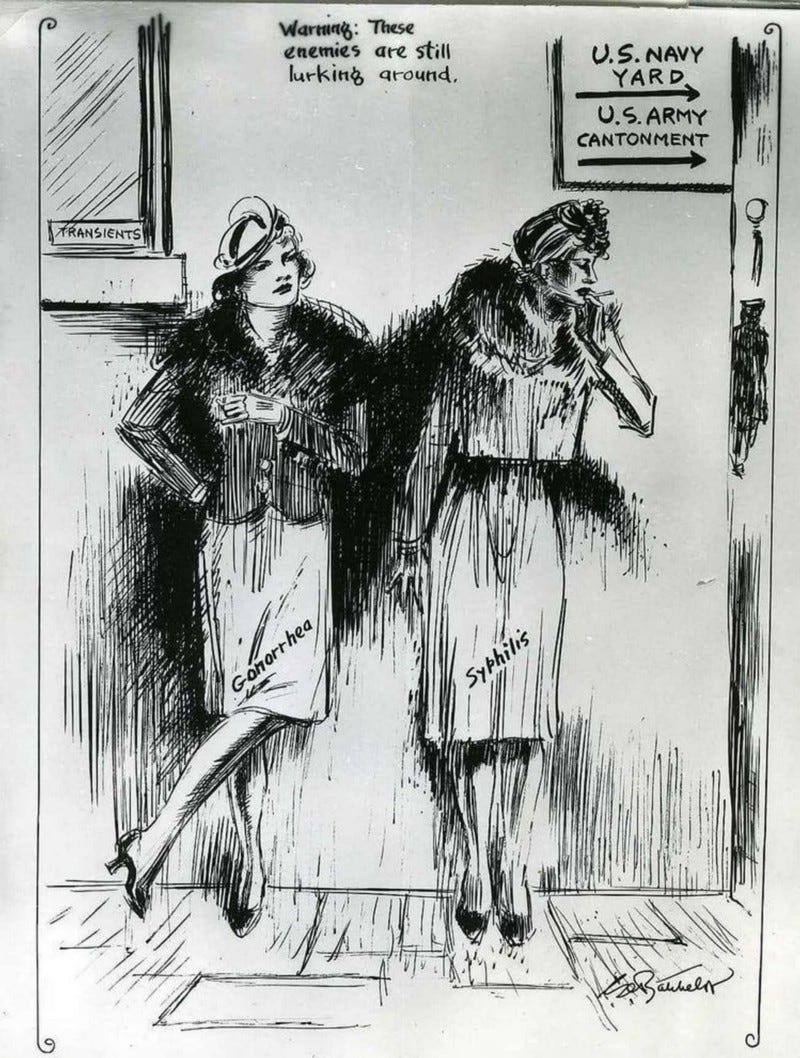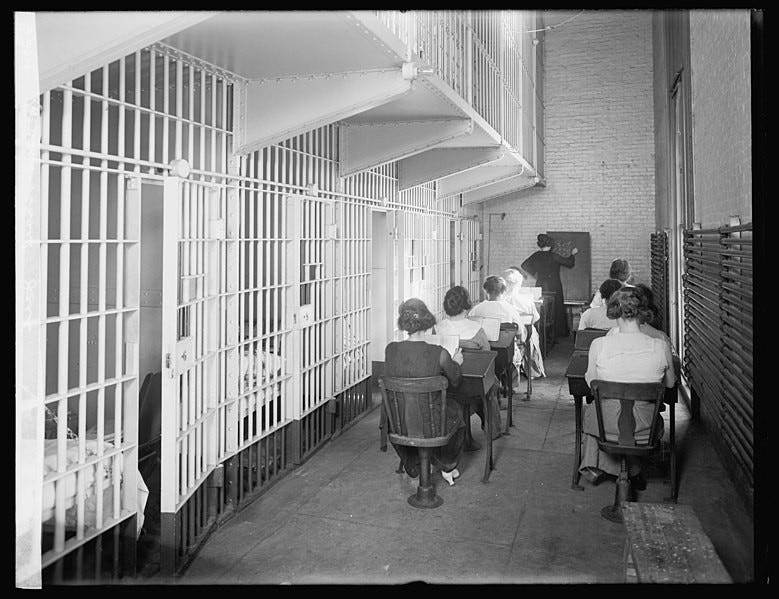How The Police Made Margaret Hennessey Afraid To Go Outside
What they did to her was horrific, and it is still legal.

Margaret Hennessey and her sister were walking to the market when they were stopped by a group of police officers.
It was a beautiful, clear winter morning in Sacramento, California. There was a gentle breeze, she remembered, and the temperature was pushing close to 50. It was February 25, 1919.
One of the police introduced himself as Officer Ryan. He said they were members of the “morals squad,” tasked with cleaning the city of vice and immorality. He told Margaret and her sister they’re under arrest.
Margaret was stunned. She protested that they’re married women.
She lives in Richmond, California, she said. Told them her husband was a foreman at Standard Oil, back in Richmond. She was just in Sacramento staying with her sister. She’d been sick with influenza, so she came to recuperate under her sister’s care. But she’s better now, so they were just going to the market to get meat for dinner.
The police didn’t care.
She offered her ID, but they didn’t want to see it.
When police shoved Margaret and her sister into the police vehicle, Margaret was shaking and upset.
Please, she pleaded. My little boy is here. He’s only six. He’s attending the local convent school while we’re here. Someone needs to pick him up from school. Please. He’s only six.
They didn’t care. Totally ignored her.
The two women were shoved into a police car and taken to a hospital known as “Canary Cottage.” It was an isolation hospital where people with infectious diseases were housed.
They had no idea what was about to happen to them.
“I have never been so humiliated in my life”
At the hospital, Margaret and her sister were forcibly stripped and subjected to a forced genital examination. A doctor probed and prodded the two women’s genitalia, examining then for sexually transmitted infections. (STIs)
Later, she would tell the press “I have never been so humiliated in my life. My reputation means something to me and I am going to defend it.” (source)
It wasn’t just Margaret and her sister.
Officer Ryan and his “morals squad” arrested 22 women that day. The halls of Canary Cottage echoed with the screams and sobs of 22 women plucked from the streets and subjected to forced genital examinations.
They were not allowed to contact anyone.
16 of the 22 women arrested in Sacramento that day were finally released after being incarcerated for over 11 hours. Margaret and her sister were among the 16 released late that night.
They were told to appear in court the next morning.
After 16 women were released, the remaining six women were locked in detention cells overnight, and not allowed to contact anyone or tell anyone where they were. Locked away and they had no idea why.
The forgotten war on women
Margaret and her sister had been detained under a law they probably didn’t even know about. It was called the “American Plan.”
At the start of WWI, the American Government was stunned to find out over 100,000 military men were infected with gonorrhea or syphilis. Assuming it was from prostitutes, they outlawed sex work within a five-mile zone of military camps. It didn’t make a difference.
Then they discovered most men infected with STIs actually got them in their hometowns. So the federal government outlawed sex work across the entire nation. That also didn’t change the STI numbers.
Finally, they discovered the women who “infected” men with STIs were not even prostitutes. They were just women back home.
At the time, medical professionals believed only women could “carry” STDs. They believed men could “get” sexually transmitted diseases from women but didn’t believe men passed them on.
Women were infecting men with sexually transmitted diseases. One social hygenist claimed women were more harmful than the enemy.
It is generally recognized that a bad and diseased woman can do more harm than any German fleet of airplanes. One woman of such character as effectually destroys a soldier as a German gun would, and more so.” (source)
That’s when the American government came up with the “American Plan.”
The solution was simple. Scoop “promiscuous” women off the streets at random and test for STDs. Police would be tasked with the job. After all, what man doesn’t know what a promiscuous woman looks like?
When police were asked what made them detain any specific woman, the reasons were all over the place. She was eating in a restaurant alone. She was smoking. She walks promiscuous. Dresses like it. Talks like it.
Some cops said they had no reason. She’s a woman, so she’s suspect.
The government started publishing posters warning men.

If a woman tested positive, she was locked away with no choice or recourse
When Margaret and her sister arrived in court the next morning, they were told charges had been dropped.
Margaret was mad. She wanted to fight it, to do something about what happened to them. But there was nothing to be done. What happened to her was totally legal. Charges were dropped. Shut up and go home.
Of the 22 women scooped off the streets the same day as Margaret and her sister, only one tested positive for a sexually transmitted disease.
Here’s what happened to women who tested positive.
If a woman tested positive for an STD, she was thrown into an institution with no choice or recourse. No ability to challenge the decision, and she was not permitted to call anyone. She just disappeared.
Once incarcerated, she was injected with mercury and fed arsenic. They believed that’s how you “cure” an STD.
“The women were injected with mercury and forced to ingest arsenic-based drugs, the most common treatments for syphilis. If they misbehaved, or failed to show “proper” ladylike deference, these women could be beaten, doused with cold water, thrown into solitary confinement — or even sterilized.” [source: history.com]
The length of incarceration varied from several days to several months. During the incarceration, women were only permitted out of their cells to be “educated” about their questionable morals.
And obviously their morals were questionable. Because, STD.
A woman would only be discharged when she was “clean” of the STD and deemed to be “cured” of her promiscuous ways and questionable morals.
Some women were sterilized against their will because eugenics laws permitted it. Don’t want “that one” to pass on her slutty genes.
The phrase “morals police” was literal. Very literal.

The war ended but the war on women didn’t.
The “American Plan” had been introduced in 1918, the year before Margaret and her sister were arrested. Federal officials began pushing every state across America to pass laws that enabled officials to “forcibly examine” any person suspected of having an STI.
In theory, the law didn’t specify women. But since medical professionals believed only women “carried” sexually transmitted infections, it was women that were targeted by the morals police.
Anyone who tested positive could be held in detention without due process for “as long as it took” to render them noninfectious.
By 1921, every state across America had “morals” laws in place.
Even after WWI ended, the war on women didn’t. From the 1920’s to the 1940’s, hundreds of thousands of women were arrested, hauled to jails or hospitals and subjected to forced genital examinations.
“Call Off Your Old Tired Ethics”
In the late 1940s, San Francisco police used “morals” laws as a way to sexually assault women. They’d pull a woman over and threaten to have her “vagged” (vaginally examined) unless she gave in to the officer’s sexual demands.
Mostly, it was working class women, immigrants and women of color that were targeted for the abuse. Women who couldn’t afford a lawyer.
In 1964, feminist writer Andrea Dworkin was arrested, hauled to jail and subjected to a forced genital examination because she attended an anti-war demonstration. She was just 18 years old.
On and on it went. Right until the 1970s.
In the mid-seventies Margo St. James founded an organization called COYOTE. It’s an acronym for “Call Off Your Old Tired Ethics”
Her aim was to battle “American Plan” laws. St. James was a retired sex worker and tired of women being harassed by police under outdated “morals” laws. Between the work of COYOTE and the women’s lib movement, arrests became less and less frequent.
But the laws were never repealed.
In the 1980s and 1990s, public health officials forcibly quarantined people with HIV, using the American Plan laws as the precedent.
Margaret was forever afraid to go outside…
When Margaret and her sister walked away from the courthouse on February 26, 1919, she went to the media. She wanted people to know what was happening to women.
She said it made her afraid to go for a walk. Afraid to go shopping. Because it could happen anytime, anywhere.
All it would take is one police officer to decide to arrest her because of how she looks, walks or talks. Or just for being a woman. She wasn’t wrong. They could and did.
Just like Margaret and her sister, most people today are unaware of those very same laws. Because here’s the thing — they were never repealed.
They aren’t used often, true enough. But they still exist. The ability to forcibly examine “suspicious” people remains law in every state in America.





Witch hunting never really ended. The only thing that changed was the definition of what defines a witch.
I had NO idea. All I can think of is Margaret's little boy wondering where his mommy and aunt were. OMG. Subhuman beings sicken me to my core and break my heart